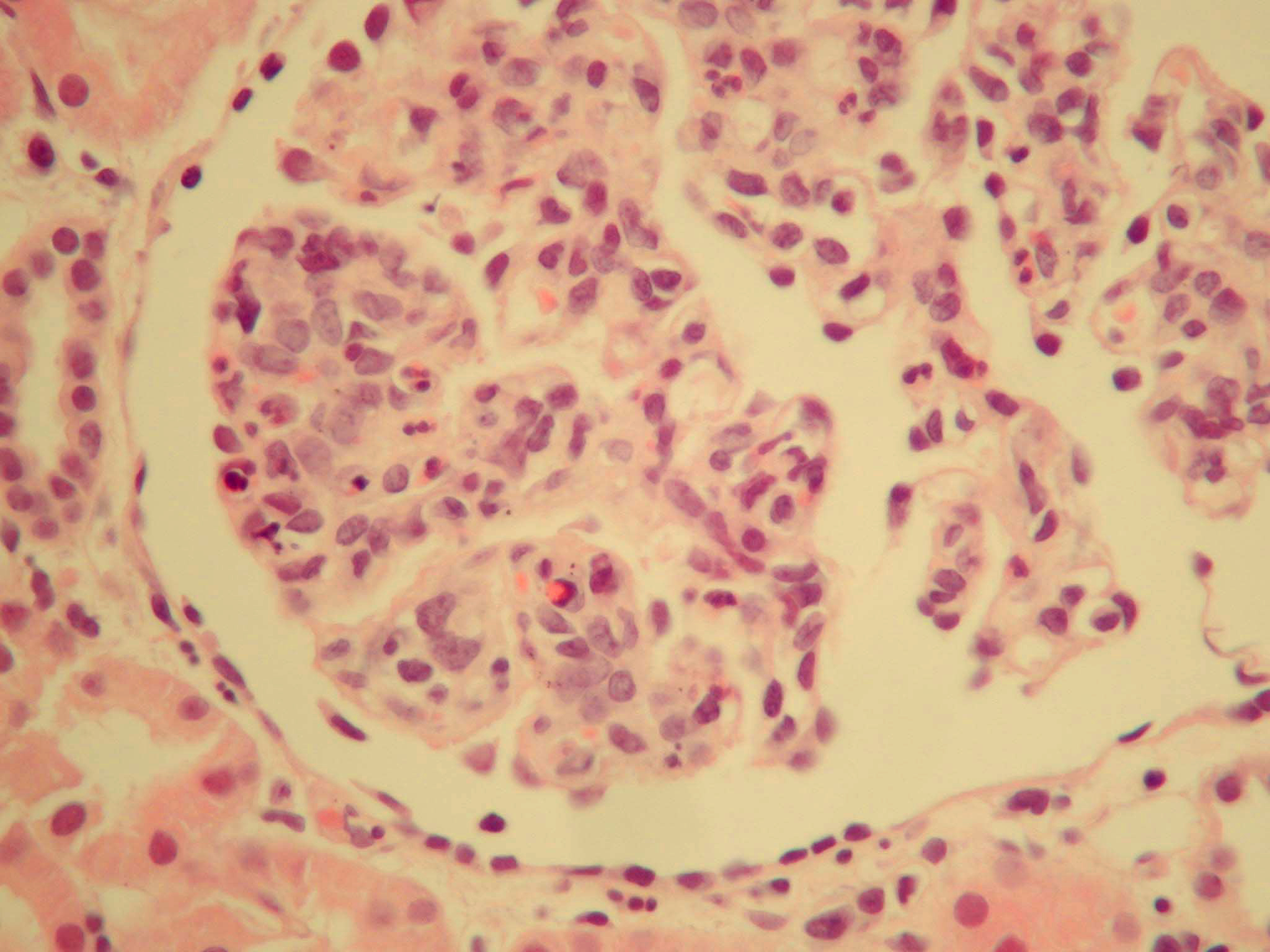Picture question answer:

a) Viral infections are most commonly implicated
b) Smokey urine is suggestive of post-streptococcal glomerulonephritis
c) Haemolytic-uraemic syndrome occurs after infection with E. coli 0157
d) Post-streptococcal glomerulonephritis should be treated with corticosteroids
e) Angiotensin converting enzyme inhibitors (ACE inhibitors) are contra-indicated in all patients with renal failure
2) The following symptoms of UTI are common in a child under 2 years.
a) Fever
b) Headache
c) Prolonged jaundice in newborns
d) Abdominal pain
e) Frequency and dysuria
1) A 5 year old boy who visited a farm five days previously presents with a history of bloody diarrhoea, headache and drowsiness. His urine is dark in colour and on stick-testing shows +++blood and ++protein.
Blood tests show plasma potassium 7.3 mmol/l (normal range 4-5.5); plasma creatinine 200 mmol/l (normal range 60-110).
(i) What is the most likely diagnosis?
(ii) Which of these blood results demands the most urgent attention and why?
(iii) Which antibiotics should he be treated with?
(iv) Which analyses would you perform on a stool sample?
(v) What would you tell his parents about the prognosis?
2) Laboratory Report on urine from 8 month old female
WHITE CELL COUNT 50-100 / hpf
RED CELL COUNT 10 / hpf
Squamous cells 10-20/hpf
Culture:
Escherichia coli >100,000 cfu/ml
Antibiotic sensitivities:
i) Does the patient have an urinary tract infection?
ii) Does the patient require treatment with antibiotics and if so which one and for how long?
iii) Any other investigations or advice.
3) Laboratory report on 72yr old male with long term indwelling urinary catheter.
WHITE CELL COUNT 20-30 / hpf
RED CELL COUNT 50/hpf
Squamous cells 0 / hpf
Culture:
Enterobacter cloacae >100,000 cfu /ml
Enterococcus faecalis <10,000 cfu/ml
Antibiotic sensitivities:
Enterobacter cloacae sensitive to ciprofloxacin and gentamicin only
Enterococcus faecalis sensitive to ampicillin
i) Does the patient have an urinary tract infection?
ii) Does the patient require treatment with antibiotics and if so which one and for how long?
4) Laboratory report on 27yr old female recently returned from honeymoon
WHITE CELL COUNT >100/hpf
RED CELL COUNT 50-100/hpf
Squamous cells 0/hpf
Culture:
Escherichia coli >100,000 cfu/ml
Antibiotic sensitivities:
i) Does the patient have an urinary tract infection?
ii) Does the patient require treatment with antibiotics and if so which one and for how long?
iii) Any other investigations or advice.
1. This is the renal biopsy of a 3 year old child with acute renal failure.
What does the picture show?
Picture question answer:
